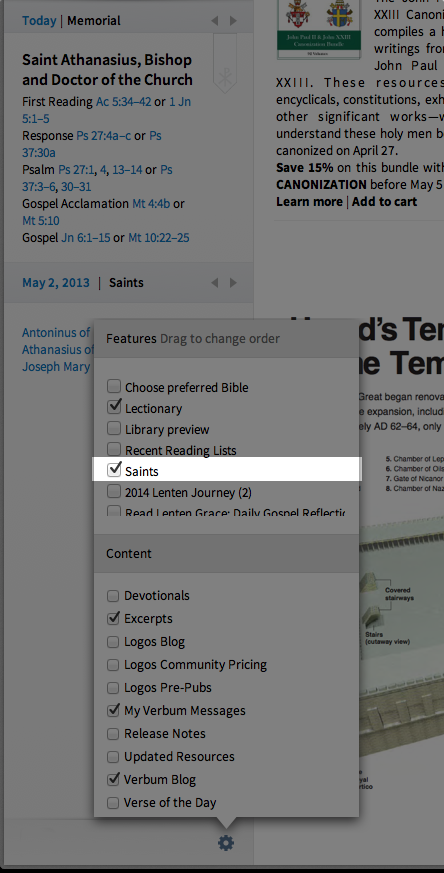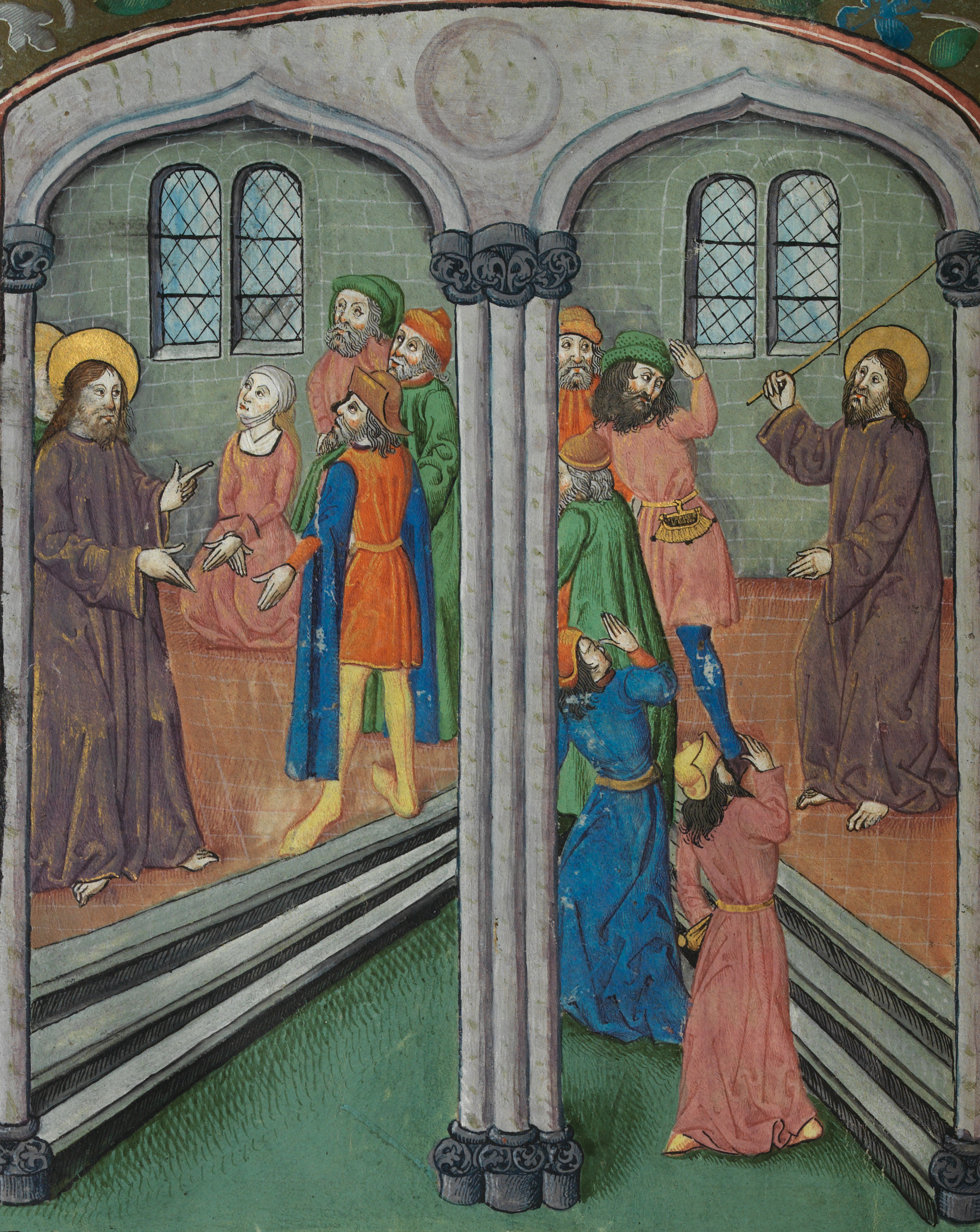In the previous post, we looked deeper into the meaning of sainthood by digging into some of the Vatican II documents. We learned that we are all called to sainthood—that a major part of being a saint is loving and edifying others, and that we’re called to be saints not as detached individuals, but as a part of the body of Christ.
Today we’ll take a look at some concrete examples of saints’ lives using just a few of Verbum’s tools and resources. We’ll begin on the home screen, making sure “saints” is checked in the bottom left panel.
The easiest way to start studying a saint is to simply click their name in the Saints Database:
The Saints Database automatically shows you the feast days and saints for any given day. It’s a great way to begin a study on a saint in conjunction with the Lectionary, or to simply get to know a saint you may have never heard of before. You can, of course, search for a specific saint by simply typing in their name in the “Go” box, but let’s take a look at the saint celebrated in today’s feast day: we’ll start by clicking “Athanasius of Alexandria.”
The Saints Database opens, giving me a brief overview of this particular saint, including a link to his feast day, plus two other resources where I can learn about Saint Athanasius. Opening these up, I get a layout like this:
Here I have the lectionary on the Layout, along with the two saints resources on the bottom-left panel. I learn that Saint Athanasius was widely known for defending the Church against the Arian heresy. We can also see to what pains he underwent to protect the Faith:
On the refusal of the Saint to restore Arius to Catholic communion, the emperor ordered the Patriarch of Constantinople to do so. The wretched heresiarch took an oath that he had always believed as the Church believes; and the patriarch, after vainly using every effort to move the emperor, had recourse to fasting and prayer, that God would avert from the Church the frightful sacrilege. The day came for the solemn entrance of Arius into the great church of Sancta Sophia. The heresiarch and his party set out glad and in triumph. But before he reached the church, death smote him swiftly and awfully, and the dreaded sacrilege was averted. St. Athanasius stood unmoved against four Roman emperors; was banished five times; was the butt of every insult, calumny, and wrong the Arians could devise, and lived in constant peril of death.[1]
We learn here of Athanasius’s persistence in the face of adversity and his zeal for truth. This courage, in conjunction with a passion for truth, is a hallmark of saints throughout history. Going back to the bottom-left panel, we can read more on Athanasius’ life or turn back to the Saints Database and learn about other saints we might be interested in.
If we wanted, we could continue to research different saints to find out more about their lives and writings. Scrolling down a bit, for example, we find Saint Augustine of Hippo:
This entry lets us see even more information, including a media panel that allows us to see an image and references to other documents in Verbum, Wikipedia, and elsewhere.
We’ve really only scratched the surface of Verbum’s capabilities when studying the lives of the saints. Stay tuned as we walk through more features, resources, and tools!
[1] Shea, J. G. (1887). Pictorial Lives of the Saints (pp. 207–208). New York; Cincinnati; Chicago: Benziger Brothers.










Where is the Saints database? I Don’t have an option to check that in my features.
Have you upgraded to the Verbum Plus libraries? https://verbum.com/libraries Older versions of Verbum don’t have the Saints Database.